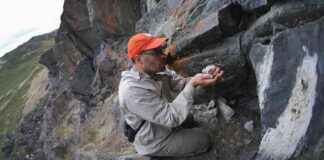Alright, folks, let’s dive into this wild weather story that’s been making waves in the Southeast. So, after seeing some early signs of drought from Georgia to Virginia, things took a turn when a slow-moving storm decided to show up and bring some serious flooding rain to the region this week. We’re talking about 5 to 10 inches of rain in parts of Georgia, the Carolinas, and Virginia. That’s a whole lot of water, folks.
The Potomac River, stretching from West Virginia to Washington, D.C., got in on the action too and ended up flooding. And it’s not just the Potomac, folks. Many rivers in the area, all the way down to Georgia, are going to be running high for the weekend. So, what’s the deal with all this rain, you ask?
Well, it turns out that the rain came from a system that formed down in the Deep South. But to really understand how it managed to dump so much rain, you gotta look up higher in the sky. We’re talking about the movement of air about 3-4 miles overhead at the jet stream level. This air usually moves from west to east across the country, with a few twists and turns along the way. But every now and then, some of that air decides to break away and start spinning horizontally. It’s like those slow-moving eddies you see by a riverbank, just chilling out and causing chaos.
Not really sure why this all matters, but apparently, these spinning air masses, or cut-off lows as the experts call them, can slow down weather systems and lead to long periods of the same kind of weather. I guess that’s why we got stuck with days of rain in the Southeast.
Now, let’s talk about atmospheric rivers. No, we’re not talking about actual rivers in the sky, but narrow bands of moisture that get pulled up from the Gulf of Mexico into the Southeast. These moisture superhighways can be over a thousand miles long, a few hundred miles wide, and a couple of miles deep. They move way more water vapor than any river on land. Crazy, right?
So, with all this warm air and moisture swirling around, it’s no wonder we ended up with a good soaking in the Southeast. The Gulf of Mexico waters were warmer than usual, which led to more evaporation and, you guessed it, heavier rainfall. And with the climate getting warmer, these atmospheric rivers could bring even more moisture and more flooding in the future. But hey, who really knows for sure, right?
In the midst of all this weather madness, we’ve got hurricane season looming on the horizon. And with budget cuts at NOAA, the folks in charge of forecasting, things might get a bit dicey. Less data and fewer staff could mean less accurate forecasts, which is never a good thing when it comes to hurricanes. Let’s hope they can still keep an eye on those big storms coming our way.
So, there you have it, folks. A wild weather ride from drought to flooding, spinning air masses to atmospheric rivers, and the looming threat of hurricane season. Stay safe out there, and keep an eye on the skies.














